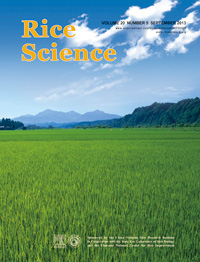The experiment was carried out to assess the reaction of different categories of rice genotypes viz., resistant, susceptible, hybrid, scented, popular and wild in response to the infestation by rice leaffolder (RLF), Cnaphalocrocis medinalis (Guenee) and to explore the possible use of these genotypes in developing RLF-resistant rice varieties. The changes of various biochemical constituents such as leaf soluble protein, phenol, ortho-dihydroxy phenol, tannin and enzymes viz., peroxidase, phenyl alanine ammonia lyase (PAL) were assessed spectrophotometrically in all the rice genotypes before and after RLF infestation. The protein profile was analyzed using sodium dodecyl sulphate-poly acrylamide gel electrophoresis (SDS-PAGE) method. A significant constituent of biochemical content such as tannin, phenol and ortho-dihydroxy phenol has been increased along with enzyme activities of peroxidase and PAL in the infested resistant (Ptb 33, TKM6 and LFR831311) and wild rice genotypes (Oryza minuta and O. rhizomatis). A decrease in leaf protein content was evident invariably in all the infested rice genotypes. It is also evident that the contents of biochemicals such as phenol, ortho-dihydroxy phenol and tannin were negatively correlated with leaffolder damage. However, leaf protein content was positively correlated with the damage by rice leaffolder. SDS-PAGE analysis for total protein profiling of healthy and C. medinalis-infested genotypes revealed the enhanced expression of a high molecular weight (> 97 kDa) protein in all the genotypes. Besides, there was also an increased induction of a 38 kDa protein in C. medinalis infested resistant genotypes, which was absent in uninfested plants. The present investigation proved that the elevated levels of biochemicals and enzymes may play a vital role in rice plants resistance to RLF.

